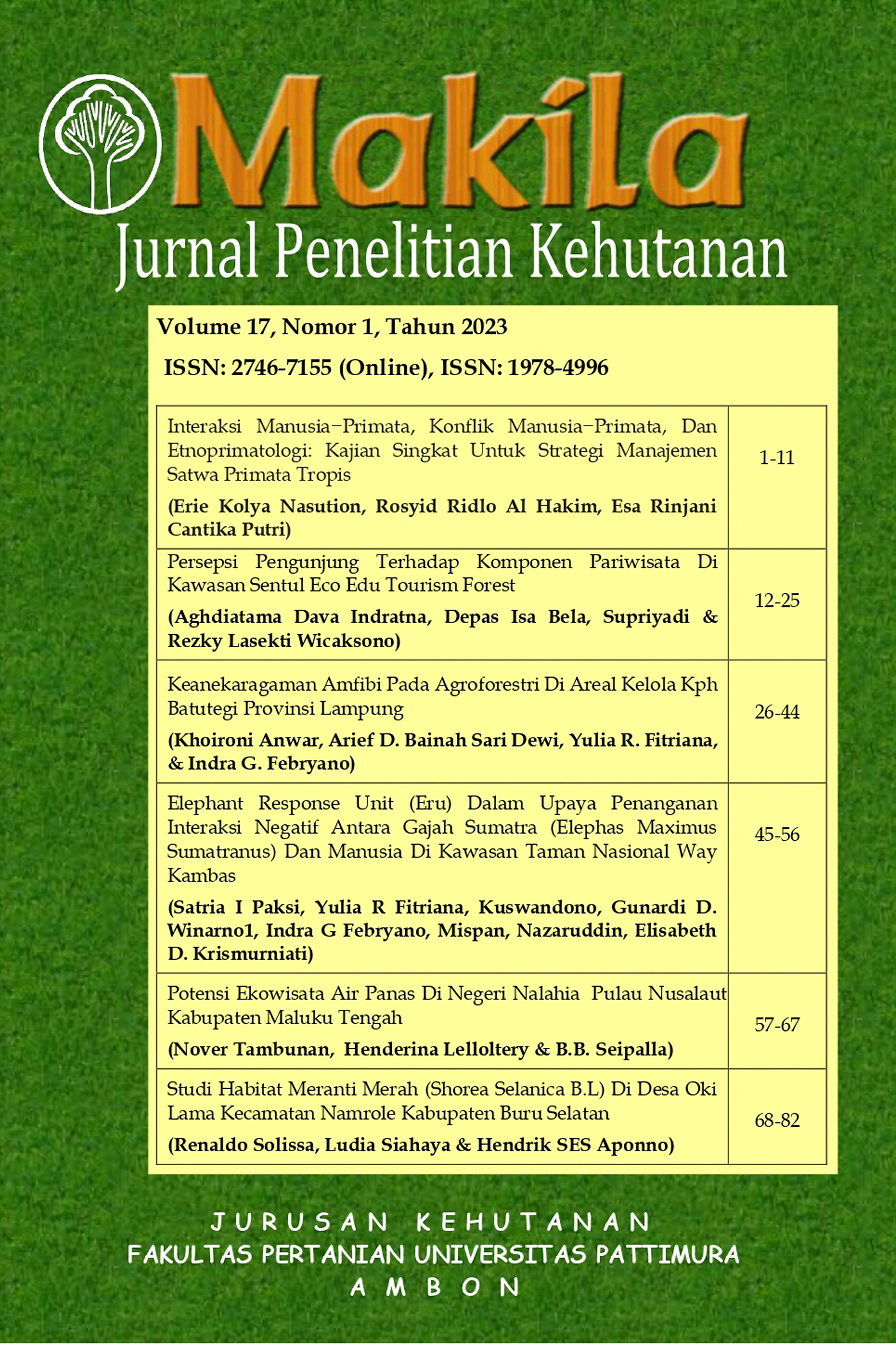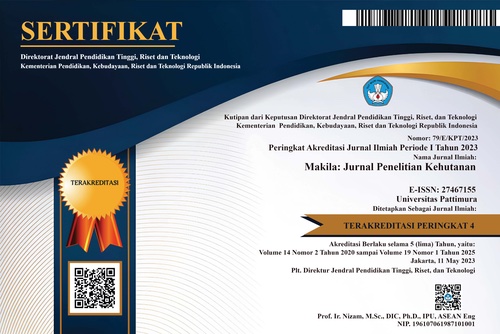Interaksi Manusia−Primata, Konflik Manusia−Primata, dan Etnoprimatologi: Kajian Singkat untuk Strategi Manajemen Satwa Primata Tropis
Abstract
Primates, wild animals often experience co-existence with humans; in this case, they share habitats. This co-existence certainly raises the potential for human-primate interactions, including positive or negative interactions. One example of negative interaction presents the phenomenon of human-primate conflict. In comparison, one example of positive interaction can be found in the ethnoprimatology phenomenon with the role of a particular ethnic community. This study briefly reviews how primate-human interactions are negative and positive (ethnoprimatology) in managing primates that live in co-existence and share their habitat with humans. The study of the proposed strategy in the persistence presented in this study focuses on the conservation of primates and does not harm humans who co-exist.
Downloads
Copyright (c) 2023 Erie Kolya Nasution, Rosyid Ridlo Al Hakim, Esa Rinjani Cantika Putri

This work is licensed under a Creative Commons Attribution 4.0 International License.











